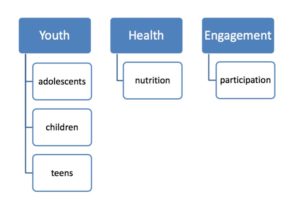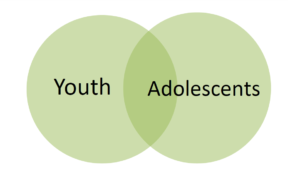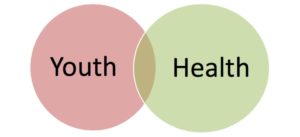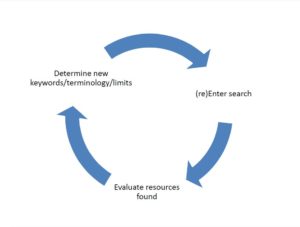Strategies
Literature Searching
Top Five Tips From Helen Smith, Agricultural Sciences Librarian
(For full presentation slides see footnote.)
1. Choose the right database
- No sense searching for genetics information in an art database!
- Use the PSU Libraries Subject Guides
- Get in touch with the librarian on the guide for a research consultation
2. Choose the right keywords
- Retrieving the best articles relies on using the right terms
- Identify the main concepts of your topic
- Brainstorm synonyms and alternative phrasings for each concept
- Use the database’s thesaurus to find more relevant terms
- Example: What factors affect youth engagement in their personal health?
- Youth: adolescents, children, teens
- Health: nutrition
- Engagement: participation
- Use Topic Research Worksheet to brainstorm keywords and concepts (p.23)

3. Combining keywords and concepts
- Librarians call this “Boolean searching”
- “OR” broadens your search [synonyms or similar concepts]
- Example: youth OR adolescents
- “AND” narrows your search [two distinct concepts]
- Example: youth AND health
- Combine terms properly
- Example: youth OR adolescents

- Example youth AND health

4. Learn to use advanced search features
Truncation
- Retrieve items with various word endings and spellings
- Example: child* will find child, children, or childish
- Usually the symbol is an asterisk (*), but sometimes it is a question mark (?) or a dollar sign ($)
Phrase Searching
- For most databases, use quotation marks around a phrase to force the words to be in that order
- Example: “invasive species” instead of invasive species
Limiting
- Many databases have advanced limiting features relevant to the subject
- Check for limiting by year, publication type, gender, or age groups
5. Follow the citations
Find more studies by using citation searching
Backward searching
- Look through the reference lists of articles you have found—these references are likely to be relevant for you as well
Forwards searching
- Find articles that cite older articles. This allows you to move forward from a seminal work and discover what new research is based on that earlier research.
- Suggested databases: Web of Science and Google Scholar
One more tip: Evaluate and modify your search as necessary
- Are there other relevant keywords that are showing up in your results? Go back and use those words in your search!
Too Much Information? Try these strategies
- Add another concept
- Use only official subject headings (not keywords)—results will be more relevant
- Search by a notable author
- Use limits: dates, gender, language, publication type, etc.
Too Little Information? Try these strategies
- Remove a concept
- Use more general terms and don’t limit to specific fields
- Try another database
- Don’t use limits
It’s an iterative (and some would say never-ending) process.[1]


